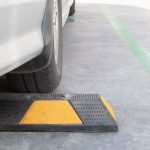Introduction
Definition of cable protectors
A cable protector, also known as a cable ramp or cable cover, is a device designed to protect cables and hoses from damage caused by heavy vehicle traffic. It is typically made of durable materials such as rubber or plastic and is placed over cables that are laid across roads or pathways. The cable protector acts as a physical barrier, preventing vehicles from running over or damaging the cables. It also helps to organize and secure the cables, reducing the risk of tripping hazards and ensuring a safe environment for both pedestrians and vehicles. Rubber cable protector is commonly used in construction sites, industrial areas, and outdoor events where there is a high volume of vehicular traffic. They play a crucial role in maintaining the integrity and functionality of cables, ensuring uninterrupted power supply and communication.
Importance of cable protectors
Cable protectors play a crucial role in ensuring the safety and durability of cables in areas with heavy vehicle traffic. These innovative devices are designed to withstand the weight and pressure exerted by vehicles, preventing any damage or disruption to the cables. By effectively securing and protecting the cables, they help to maintain uninterrupted communication and power supply, which is essential for various industries and sectors. Additionally, cable protectors also ensure the safety of pedestrians and drivers by eliminating tripping hazards and reducing the risk of accidents. With their ability to handle heavy vehicle traffic, cable protectors have become an indispensable solution for maintaining the integrity and functionality of cables in demanding environments.
Types of Cable Protectors
Rubber cable protectors
Rubber cable protectors are an essential solution for managing heavy vehicle traffic. These durable and flexible devices are designed to protect cables and hoses from damage caused by vehicles passing over them. Made from high-quality rubber materials, they can withstand the weight and impact of heavy vehicles, ensuring the safety and longevity of the cables. Rubber cable protectors also provide a secure and stable surface for vehicles to drive over, reducing the risk of accidents and tripping hazards. With their easy installation and maintenance, rubber cable protectors are a cost-effective and reliable option for any location that experiences heavy vehicle traffic.
Plastic cable protectors
Plastic cable protectors are an essential solution for managing heavy vehicle traffic. Designed to withstand the weight and pressure of large vehicles, these protectors provide a reliable and durable barrier for cables and hoses. Made from high-quality plastic materials, they offer superior strength and impact resistance, ensuring long-lasting performance even in demanding environments. Additionally, plastic cable protectors are easy to install and maintain, making them a cost-effective choice for any application. Whether it’s in construction sites, industrial facilities, or outdoor events, these protectors offer the necessary protection to keep cables safe and prevent accidents or damage. With their versatility and reliability, plastic cable protectors are a must-have for any organization dealing with heavy vehicle traffic.
Metal cable protectors
Metal cable protectors are a crucial component in ensuring the safety and durability of cables in heavy vehicle traffic areas. These protectors are specifically designed to withstand the immense weight and pressure exerted by vehicles, preventing damage to the cables and ensuring uninterrupted power supply. Made from high-quality metals such as steel or aluminum, metal cable protectors offer superior strength and durability, making them ideal for use in industrial, commercial, and construction sites. Additionally, their sleek and low-profile design allows for easy installation and ensures that they do not pose a tripping hazard. With their ability to handle heavy vehicle traffic, metal cable protectors are an essential investment for any location where cables are exposed to potential damage.
Features and Benefits
Durability and strength
Durability and strength are crucial factors to consider when it comes to cable protectors handling heavy vehicle traffic. These robust devices are designed to withstand the immense weight and pressure exerted by heavy vehicles, ensuring the safety and longevity of the cables they protect. Constructed from high-quality materials such as rubber or polyurethane, cable protectors are engineered to resist impact, abrasion, and environmental elements. Their sturdy construction and reinforced design enable them to endure constant use and heavy loads without compromising their integrity. With their exceptional durability and strength, cable protectors provide a reliable solution for safeguarding cables in areas with heavy vehicle traffic, reducing the risk of damage or disruption to vital communication and power lines.
Easy installation and maintenance
Easy installation and maintenance are key features of cable protectors that can handle heavy vehicle traffic. These robust and durable devices are designed to withstand the weight and pressure exerted by heavy vehicles, ensuring the safety and protection of cables and wires. The installation process is straightforward, requiring minimal time and effort. Once installed, these cable protectors require little to no maintenance, reducing the need for frequent inspections and repairs. This makes them a cost-effective solution for areas with heavy vehicle traffic, such as construction sites, warehouses, and parking lots. With their easy installation and low maintenance requirements, cable protectors provide a reliable and hassle-free solution for protecting cables in high-traffic areas.
Protection against vehicle impact
Protection against vehicle impact is one of the key concerns when it comes to cable protectors. These robust devices are designed to withstand heavy vehicle traffic, ensuring that cables and wires remain safe and secure. With their durable construction and high load-bearing capacity, cable protectors provide a reliable barrier against accidental impact, preventing damage to vital electrical and data cables. Whether it’s in industrial settings, construction sites, or outdoor events, cable protectors offer a practical solution for safeguarding cables from the potential hazards of heavy vehicle traffic.
Applications
Construction sites
Construction sites are dynamic environments that often experience heavy vehicle traffic. In order to ensure the safety of both workers and equipment, it is crucial to have effective cable protectors in place. These protectors are designed to withstand the weight and pressure exerted by heavy vehicles, preventing damage to cables and ensuring uninterrupted power supply. By installing cable protectors at construction sites, potential hazards and accidents can be minimized, resulting in a safer working environment. Additionally, cable protectors also help in organizing and managing cables, reducing the risk of tripping and improving overall efficiency. With their durability and reliability, cable protectors play a vital role in handling the challenges posed by heavy vehicle traffic at construction sites.
Warehouses and factories
Warehouses and factories are high-traffic areas that require effective cable protection solutions to ensure smooth operations. With the constant movement of heavy vehicles such as forklifts and trucks, the risk of cable damage and disruption is significantly increased. Cable protectors play a crucial role in safeguarding the electrical and data cables that power essential equipment and machinery in these industrial settings. By providing a durable and robust barrier, cable protectors prevent accidental tripping hazards and potential downtime caused by cable failures. Additionally, they help maintain a neat and organized workspace, reducing the risk of accidents and improving overall productivity. With their ability to handle heavy vehicle traffic, cable protectors are an indispensable asset in warehouses and factories, ensuring the uninterrupted flow of operations and enhancing workplace safety.
Outdoor events and concerts
Outdoor events and concerts are popular activities that attract large crowds. These events often take place in open spaces, such as parks or stadiums, where heavy vehicle traffic is expected. To ensure the safety of both attendees and the infrastructure, it is crucial to have reliable cable protectors in place. Cable protectors are designed to withstand the weight and pressure of heavy vehicles, providing a secure pathway for cables and wires. By using cable protectors, event organizers can prevent accidents and damage to electrical equipment, ensuring a smooth and uninterrupted experience for everyone involved.
Conclusion
Summary of key points
In summary, cable protectors are an essential solution for handling heavy vehicle traffic. They provide a protective barrier for cables and wires, preventing damage and ensuring the smooth flow of traffic. Cable protectors are designed to withstand the weight and pressure exerted by heavy vehicles, making them ideal for use in industrial areas, construction sites, and event venues. Additionally, they are easy to install and maintain, offering a cost-effective and efficient solution for managing cables in high-traffic areas. By using cable protectors, businesses can minimize the risk of accidents, maintain reliable communication and power supply, and prolong the lifespan of their cables. Overall, cable protectors are a crucial investment for any location that experiences heavy vehicle traffic.
Importance of using cable protectors
The importance of using cable protectors cannot be overstated, especially when it comes to heavy vehicle traffic. Cable protectors play a crucial role in safeguarding cables and wires from potential damage caused by the weight and movement of vehicles. Without proper protection, cables can be crushed, bent, or severed, leading to costly repairs and potential safety hazards. By using cable protectors, businesses and organizations can ensure the longevity and reliability of their electrical systems, as well as maintain a safe and efficient working environment. Whether it’s in construction sites, industrial facilities, or event venues, cable protectors provide the necessary protection to keep cables secure and prevent accidents. Investing in high-quality cable protectors is a wise decision that can save businesses time, money, and unnecessary headaches in the long run.





